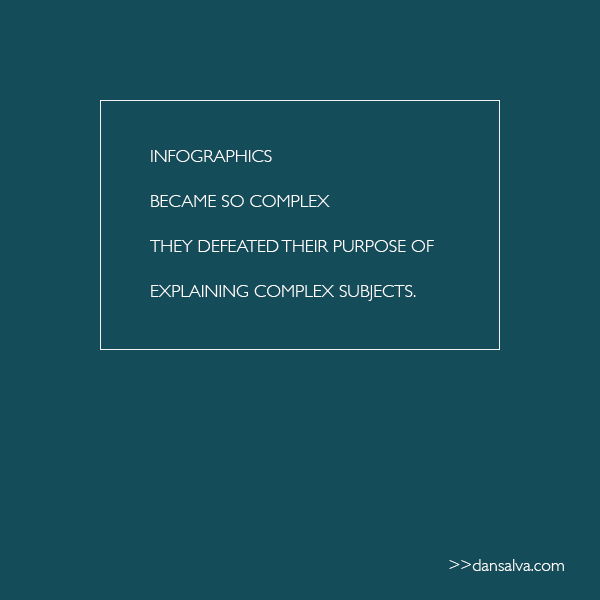Infographics are dead?
A recent post by Fast Company reported that infographic usage showed a steady increase from 2007 to 2012, and then started to decline. That leads to sensational headlines like “What killed the infographic?” All drama aside, even the Fast Company post points out that infographics haven’t died.
The overlooked question is, “Why the decline?"
First, a word from the past
Telling the story behind the numbers has been the quest of data visualization stretching back centuries. Infographics emerged as a form of data visualization, unleashing creativity to help relay the story that the numbers told. So let’s not act like this is some kind of fad. Data visualization and infographics are incredibly valuable communication tools. We just need to understand how to use them in the context of today’s environment.
We got a little carried away
Great infographics captivated us. Complex topics became easy to comprehend through a masterful flow of engaging data illustrations. Everybody wanted in on the action. Suddenly the online world was inundated with long, scrolling graphics packed with charts and graphs.
The storytelling took a beating as it seemed more important to just pack an execution with a bunch of loosely related charts and let the reader muddle through to try to find the meaning.
Our users got a little fed up with us
People didn’t want to put in the work to decipher our infographics. The whole purpose of infographics in the first place was to simplify complicated data to help us quickly get to the insight.
On top of that, users have less attention to give today. According to Statistic Brain, the average attention span has dropped from 12 seconds in 2000 to just 8.25 seconds in 2015.
Then it happened. We started seeing infographics about infographics.
I noted the trend back in 2013, and even took the opportunity to invent the inphonigraphic. (It never really caught on. Go figure.)
4 guidelines for infographics in today’s world
Data visualization is still a powerful tool for our storytelling – as long as we keep today’s viewer in mind. Here are 4 guidelines.
- Illustrate the insight - don’t just fancy-up the data. Understand the insight and then choose the best data set that emphatically makes your point.
- Keep it snackable - remember that erosion of our attention span I mentioned earlier? Think smaller chunks of data visualization that tell a compelling story.
- Make the graphics relevant - if you’re going to create a bar chart out of popsicle sticks, you better reporting data for an ice cream company. When your graphical approach matches the company, industry, and story, the illustration becomes more powerful.
- Have a mobile mindset - Google has reported that more searches are conducted on mobile devices than desktops. That’s a considerably smaller screen. Users are conditioned to scroll on mobile devices, but really consider how your finely-detailed or small text-heavy executions will work in this environment (heres a hint: not very well).
Infographics still make a lot of sense. And when done well, they appeal to us in a way that other communication tools just can’t match.
The challenge is to pay attention to how today’s users want to consume information. And then create meaningful and insightful infographics in a relevant format to match our users’ expectations.
—
Sign up for my email updates and get the latest insights in your inbox.

